This is important to know: all nutrition needed by humans comes from the sun and Earth in the form of vitamins, minerals, antioxidants, phytonutrients, sugars, lipids, and amino acids. The first level of collected nutrition suitable for human consumption happens in the plant kingdom where roots pull minerals from the soil and leaves create (from the sun through photosynthesis) vitamins, antioxidants, and phytonutrients as well as carbohydrates, fats, and proteins.
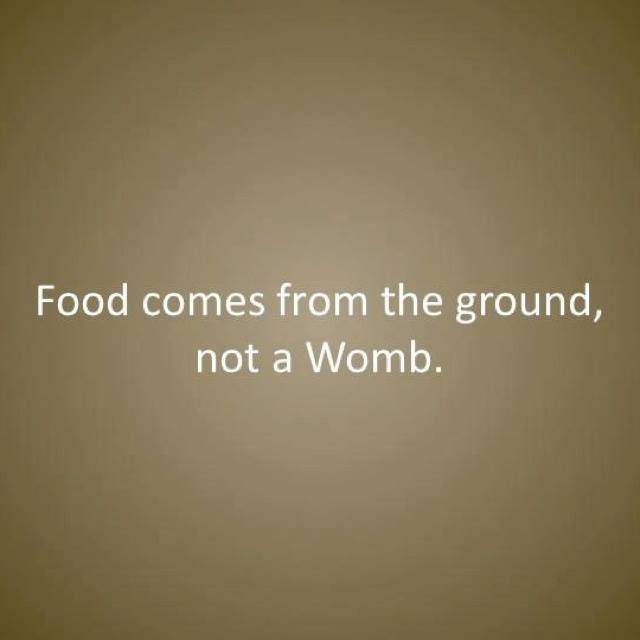
Once upon a time before we started gardening & farming and long before we developed a grocery distribution system, it was efficient to eat animals to get the nutrition out of their bodies that they got from the sun and Earth by eating plants. If humans couldn’t get enough plant-food directly, it was smart and efficient to supplement with or subsist upon animals who ate plants.
Rather than spend our time in the wild eating all day like the animals, we had other important tasks to do to ensure our safety and survival. The wild goat had not much else to do than to eat all day and move around to find more food. With no shelters to build or tools to make, wild animals have little else to do besides eat, avoid prey, migrate, breed occasionally, and tend to the offspring when they’re around.
As the lives of early humans got more complex and busier, they could save time and energy eating the body of someone else for their own nutritional needs instead of gathering and chewing all-gosh-darn-day on plant material. They definitely weren’t thinking about calories, vitamins, minerals, antioxidants, phytonutrients, sugars, lipids, and amino acids but they certainly were guided by their hunger to seek food to consume in order to survive. It was unspoken delegation: “Hey, you, goat! You eat the plants while I paint this cave. Then I’ll eat you later while the paint dries.” Otherwise the early human never would have never gotten themselves fed AND those caves decorated.
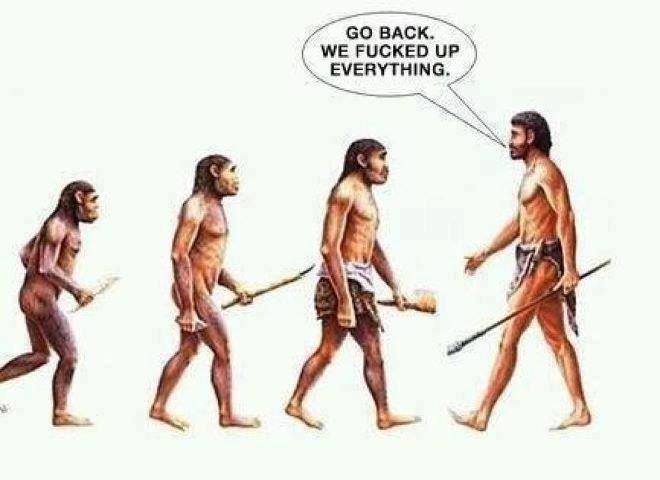
Now that we live in a time that postdates the invention of agriculture and industry, we can enjoy and marvel over the ease of purchasing food from the modern grocery distribution system. We can grow our own food, but we don’t have to. We can shop from smaller farmers markets if we choose or we can shop from gigantic food warehouses. For most of us, the food is brought practically to us in one type of facility or another. We don’t have to grow it, raise it, or hunt it ourselves. (Note: There are rural locations and food deserts which pose exceptions.)
The effort it takes for the average American to procure food involves driving, riding, biking, or walking to the nearest grocery store or food outlet, moving about the facility and making food selections, paying, and driving, riding, biking, or walking back to the place of residence and putting the food away where it is kept.
The same amount of effort is required whether someone moves about the facility and makes plant-food or animal-food (meat, dairy, eggs) choices. Since all nutrition comes from Earth and sun via plants, it is just as convenient now to go direct and procure and consume plants. Eating animals no longer saves us any time. Actually, thinking about all the grocery stores that I frequent, the produce sections are in the front of the stores. The milk, meat, and eggs are in the back or the far corners, so, logistically, shopping for plants may actually save you time.
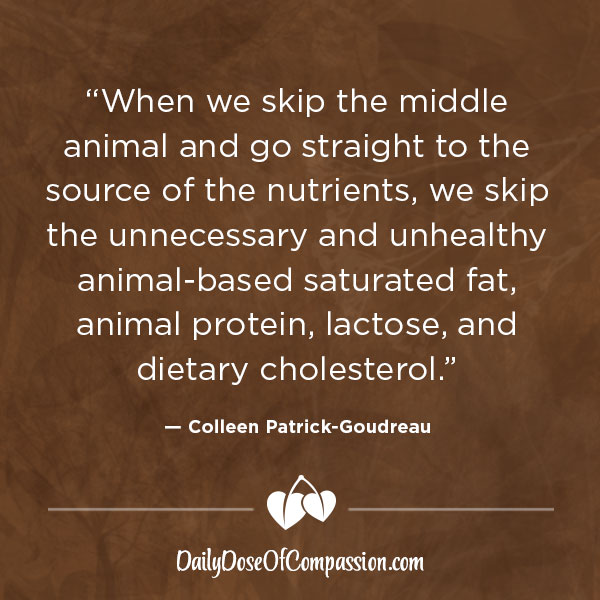
Plants eaten by animals (human or non-human) are considered first-hand nutrition. An animal eaten by another animal (human eating cow, for example) is second-hand nutrition because the human is eating the cow to get the nutrient stores the cow acquired from eating plants that contain the necessary and ultimate nutrition from the sun and Earth. Animals are not magical synthesizers of nutrients. They have in their flesh and fluids (milk, eggs) nutrients that are stored there from eating plants.
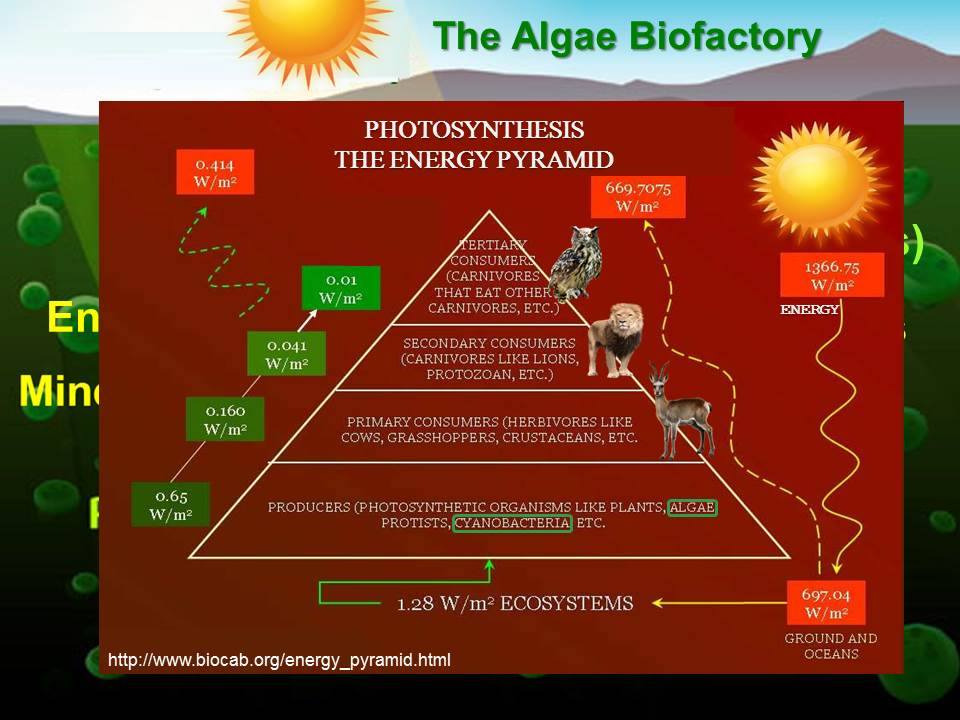
When the business of breeding, raising, and slaughtering animals for human consumption is cruel, polluting of the environment, and dangerous to human health why would anyone choose second-hand nutrition that saves no time in procuring? This is an outdated model of consumption that we need to outgrow before it kills us.

Think about a hamburger. It was a cow. A cow who had not much else to do all day but eat plants. It ate plants all-gosh-darn-day while you bathed, worked, exercised, played, and created. If you didn’t have a way to procure first-hand plants, it’d make pretty good sense to eat that cow to get the second-hand plant-nutrients out of its body. But you do (most of us reading do anyway) have a way to get nutrient- and calorie-dense plants to eat. Luckily you’re not limited to low-calorie grass or vegetables like the pastured cow, but you can also choose fruits, nuts, seeds, legumes, grains, and root vegetables. All of these whole plant-foods are full of the nutrients your human body needs, and a middle-individual who needed to be bred, raised, and slaughtered wasn’t required. And because many plant foods are more dense in calories than grass, you don’t have to eat all gosh-darn-day. Two or three meals in between painting your modern cave will suffice.
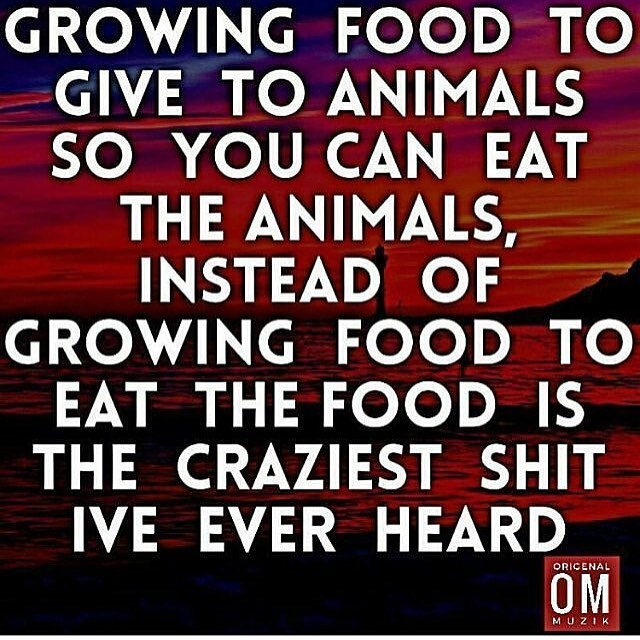
Can you see how insanely inefficient it is to pump so many resources (water, plants, land space) into growing animals especially when it no longer offers us a mass advantage either in survival, time savings, or wellbeing? It makes no more sense than eating each other (yes, cannibalism) to get the nutrients out of each other’s flesh (yes, nutrients are in there and, yes, we are meat) or drinking a lactating mother’s milk from her human breast. Luckily the eggs of female humans stay inside the body so that we don’t have to suffer that analogy. But you get my drift.
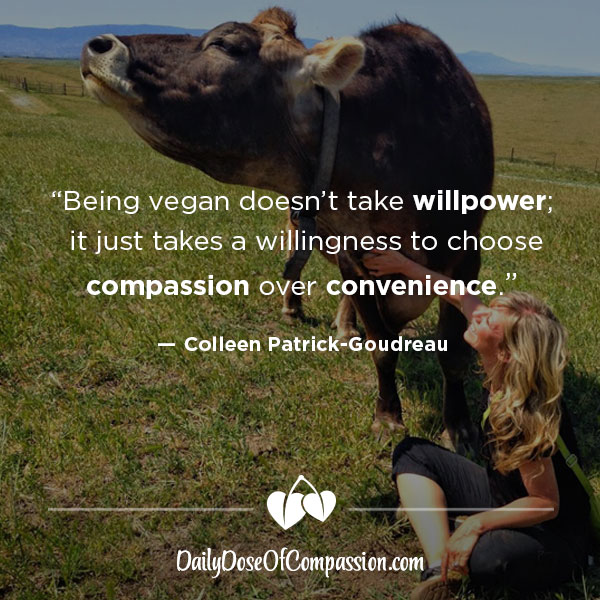
We need to collectively shift our mindset, for the sake of human survival on Earth, to realizing that the neo-efficient and neo-convenient thing to do is grow, distribute, procure, and eat plants. They have everything we need and have ever needed.
Additional Resources
• Nutrition Only in Animal-Based Foods
• Johns Hopkins on Health & Environmental Implications of Animal Consumption
• 57 Health Benefits of a Plant-Based Diet
• Toward Veganism: Go Paleo, Not Vegetarian First
• Getting Started on a Low Fat, Whole Food, Plant-Based Diet

{ 2 comments… read them below or add one }
“There are risks to a person’s mental health in any fundamentalist group, but for vegans this is compounded by the fact that following a totally plant-based diet carries significant risks for the brain and nervous system due to its being naturally deficient in several essential nutrients: Vitamins A, B-2, B-3, B-6, B-12, D3, and K-2, cholesterol, iodine, heme-iron, zinc, and the fatty acids DHA and EPA.
Without very careful dietary management (which will certainly include supplements), this will already put an individual at a disadvantage when it comes to thinking clearly.
https://www.ethicalomnivore.org/dangers-of-vegan-movement/
Based on the many books written by doctors that I have read based on cited research studies, the only supplement recommended for vegans (and all eaters) is B12 which is deficient in most diets. I’ve been 100% whole food vegan for 7 years and my blood work is stellar. My doctor is not concerned with my diet and attributes it, along with being active, not drinking alcohol, and not smoking tobacco, to my excellent health at 52 years old.
Please explain how someone else’s cholesterol is necessary to consume for my health when my liver makes my own cholesterol? This is a good place to start if you want to work down the list of nutrients you posted.
{ 2 trackbacks }